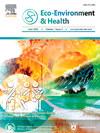Long-term exposure to low-level ambient BTEX and site-specific cancer risk: A national cohort study in the UK Biobank
引用次数: 0
Abstract
Benzene, toluene, ethylbenzene, and xylene (BTEX) have been associated with certain cancers in the occupational population. This study aimed to investigate the associations between low-level ambient BTEX exposure and cancer risks in the general population. We leveraged data from the UK Biobank and included individuals free of cancer at 2006–2010 baseline. Annual concentrations of BTEX were estimated using a chemistry-climate model, and the associations between BTEX and incident overall and 18 site-specific cancers were investigated with Cox proportional hazard models. We also fitted restricted cubic splines to explore the exposure-response relationships. The study sample comprised 409,579 participants [mean age 56.2 (8.11) years; 219,315 (53.5%) females]. Over a mean (SD) follow-up period of 11.2 (2.64) years (4,597,164 person-years), 60,777 overall incident cancer cases occurred. The results showed significant associations between overall cancers and benzene [HR 1.93 (95% CI: 1.89, 1.96)], toluene [1.25 (1.23, 1.26)] and xylene [1.11 (1.10, 1.12)]. Benzene and toluene were associated with a higher risk of 18 site-specific cancers. For xylenes (a summation of ethylbenzene, m/p-xylene, and o-xylene in the model), significant associations with multiple myeloma, hepatobiliary tract, thyroid, or connective soft tissue were not observed. Exposure-response curves suggested a higher risk of overall cancer beyond the benzene threshold. For toluene and xylene, there was no threshold or plateau across the range of exposures. This large-scale prospective cohort study demonstrates that long-term exposure to low-level ambient BTEX could increase the risk of overall and site-specific cancers in the general population.

长期暴露于低水平环境BTEX和特定部位的癌症风险:英国生物银行的一项国家队列研究
苯、甲苯、乙苯和二甲苯(BTEX)与职业人群中的某些癌症有关。本研究旨在调查普通人群中低水平环境BTEX暴露与癌症风险之间的关系。我们利用了英国生物银行的数据,并纳入了2006-2010年基线无癌症的个体。使用化学-气候模型估计BTEX的年浓度,并使用Cox比例风险模型调查BTEX与总体事件和18种部位特异性癌症之间的关系。我们还拟合了限制三次样条曲线来探索暴露-响应关系。研究样本包括409,579名参与者[平均年龄56.2(8.11)岁;219,315(53.5%)女性]。在平均(SD) 11.2(2.64)年(4,597,164人年)的随访期间,总共发生了60,777例癌症病例。结果显示,总体癌症与苯[相对危险度1.93(95%可信区间:1.89,1.96)]、甲苯[1.25(1.23,1.26)]和二甲苯[1.11(1.10,1.12)]之间存在显著关联。苯和甲苯与18种特定部位癌症的高风险相关。对于二甲苯(模型中乙苯、间/对二甲苯和邻二甲苯的总和),未观察到与多发性骨髓瘤、肝胆道、甲状腺或结缔组织软组织的显著关联。暴露-反应曲线表明,超过苯阈值,总体癌症风险更高。对于甲苯和二甲苯,在整个暴露范围内没有阈值或平台。这项大规模前瞻性队列研究表明,长期暴露于低水平的环境BTEX可能会增加普通人群患整体和部位特异性癌症的风险。
本文章由计算机程序翻译,如有差异,请以英文原文为准。
求助全文
约1分钟内获得全文
求助全文
来源期刊

Eco-Environment & Health
环境科学与生态学-生态、环境与健康
CiteScore
11.00
自引率
0.00%
发文量
18
审稿时长
22 days
期刊介绍:
Eco-Environment & Health (EEH) is an international and multidisciplinary peer-reviewed journal designed for publications on the frontiers of the ecology, environment and health as well as their related disciplines. EEH focuses on the concept of “One Health” to promote green and sustainable development, dealing with the interactions among ecology, environment and health, and the underlying mechanisms and interventions. Our mission is to be one of the most important flagship journals in the field of environmental health.
Scopes
EEH covers a variety of research areas, including but not limited to ecology and biodiversity conservation, environmental behaviors and bioprocesses of emerging contaminants, human exposure and health effects, and evaluation, management and regulation of environmental risks. The key topics of EEH include:
1) Ecology and Biodiversity Conservation
Biodiversity
Ecological restoration
Ecological safety
Protected area
2) Environmental and Biological Fate of Emerging Contaminants
Environmental behaviors
Environmental processes
Environmental microbiology
3) Human Exposure and Health Effects
Environmental toxicology
Environmental epidemiology
Environmental health risk
Food safety
4) Evaluation, Management and Regulation of Environmental Risks
Chemical safety
Environmental policy
Health policy
Health economics
Environmental remediation
 求助内容:
求助内容: 应助结果提醒方式:
应助结果提醒方式:


